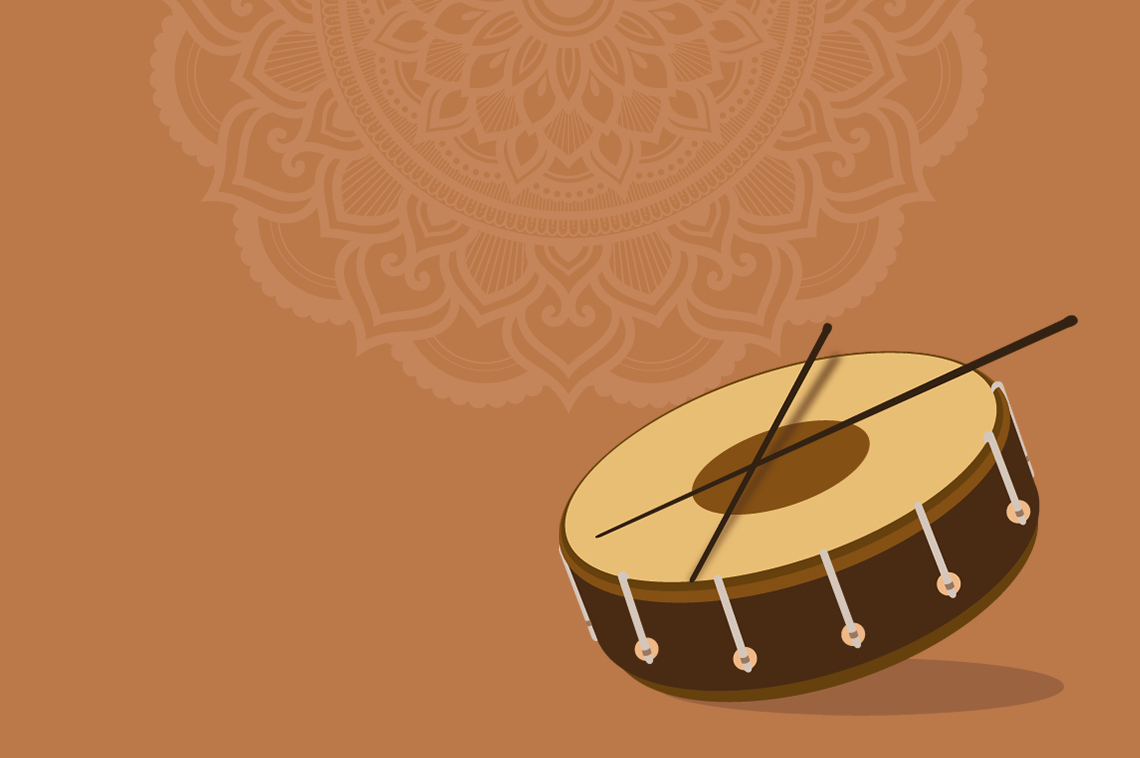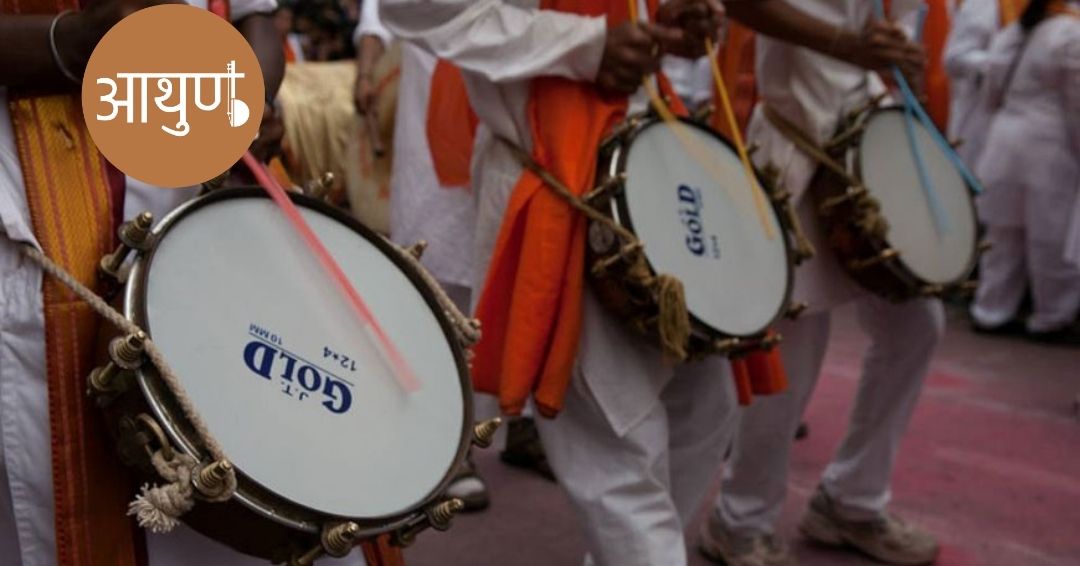


Tasha is a popular folk percussion instrument of kettle drum variety from Rajasthan. It is used as a secondary drum in ensembles paired with a larger drum. It is characterised by a shallow metallic shell, lacing made of rawhide, and is played with drumsticks. Tasha is very popular in marriage procession bands.

Tasha is a drum ensemble with ancient Persian origins, also known as “Taash” or “Taasha” drums. These drums disseminated to India with the Mughal migration, and from India spread worldwide with the Indian diaspora. The Tasha drum proper is a conical or bowl shaped nagaara (aka nagada or nagaada) type drum which is played with a heavy bass drum called dhol, or simply “bass”, and brass cymbals or metal shakers called jhaanj or jhaal (Hindi/Sanskrit). Tassa-dhol ensembles of three
to five players are especially common in street processions, whether associated with Indian weddings, political rallies, Hindu festivals, or Muslim festivals, especially Muharram (known as “Hosay” in Trinidad, a colloquialization of “Hussain”). In Maharashtra, ensembles of several dozen drummers compete in festivities honoring the deity Ganesh. Drummers in these ensembles are often amateurs, or specialists in other drum traditions.
A shallow clay vessel. The wide opening is covered with skin, tightened by leather tapes, through a hoop underneath. While playing, suspended from the neck, beaten with two sticks. Used in folk and traditional music and dance sequences of Jammu and Kashmir.